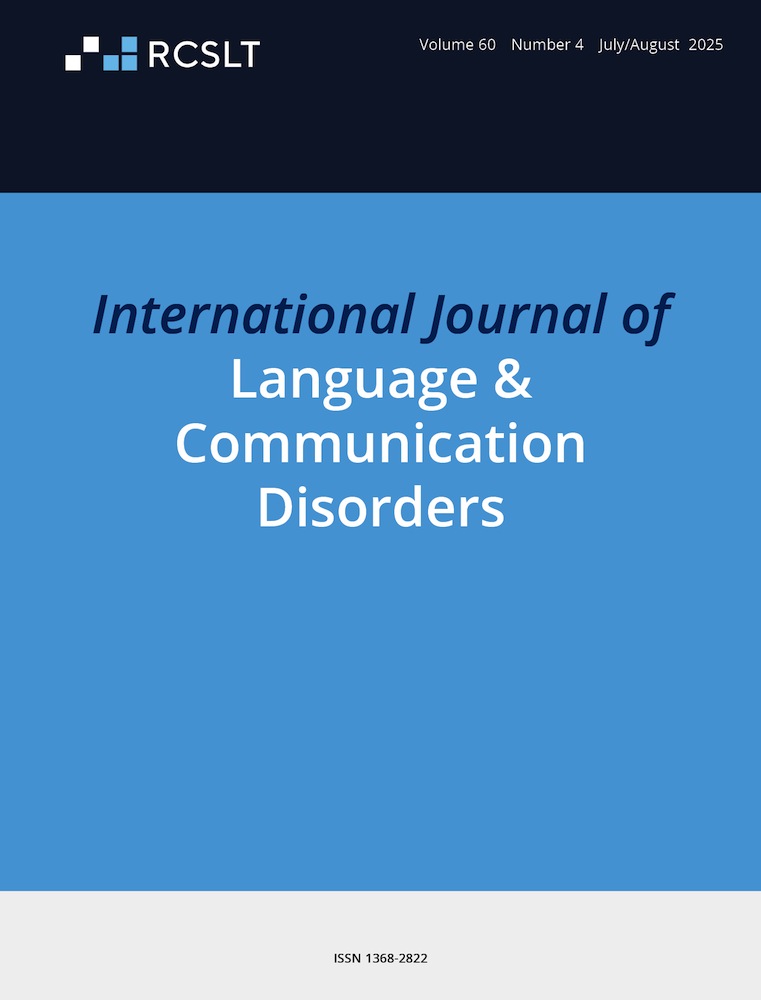Dynamic Assessment of Narratives in Bilingual Dutch-Speaking Children: Identification of Developmental Language Disorders
Funding: The authors received no specific funding for this work.
ABSTRACT
Background
Bilingual children are at risk for being misdiagnosed with developmental language disorders (DLD) because language tests in speech-language practice often fail to accommodate cultural and linguistic diversity. Evaluation of learning ability and modifiability during dynamic assessment may improve the diagnostic procedure for bilingual children, as children with developmental language disorders tend to have a more limited learning ability for language.
Aims
This study aimed to investigate whether there are differences between typically developing bilingual children and bilingual children with DLD on gain scores (i.e., difference between post- and pre-measurement) and modifiability using a dynamic assessment protocol focusing on narrative abilities.
Methods and Procedures
Ten typically developing bilingual children and six bilingual children with a diagnosis of DLD (6;0–10;1 years) participated in this study. A test-teach-retest protocol with two intervention sessions of 30 min was administered. Before and after the intervention phase, the narrative abilities of the participants were measured using a telling and a retelling task from the Multilingual Assessment Instrument for Narratives (MAIN). The narrative intervention focused on teaching story structure elements to improve the children's story grammar. After each session, the modifiability of the children's learning abilities was rated by two investigators using a standardised questionnaire. Gain scores and modifiability were compared between groups.
Outcomes and Results
After the intervention sessions, both groups differed significantly in scores on the modifiability questionnaire with the typically developing children being more responsive to the intervention compared to the children with DLD. No difference in gain scores could be detected between the two groups.
Conclusions and Implications
Dynamic assessment of narratives and more specifically the evaluation of modifiability, is a valid method to differentiate between bilingual children with DLD and bilingual children with language differences due to a decreased language exposure in one or all of their languages, the Ethics Committee of the Ghent University Hospital and could therefore be employed more during diagnostic procedures in clinical practice.
WHAT THIS PAPER ADDS
- In bilingual children, misdiagnosis of developmental language disorders may occur in the diagnostic process of language disorders as test instruments are often not adapted to their unique cultural and linguistic backgrounds. Evaluation of learning ability during dynamic assessment might improve the diagnostic procedure for bilingual children since children with DLD tend to have a more limited learning ability for language. In particular, assessing modifiability or responsiveness to intervention holds promise for distinguishing between bilingual children with and without DLD.
- Similarly to English language learners, bilingual children with Dutch as a second language who are typically developing scored significantly higher on a modifiability questionnaire assessing their responsiveness to intervention in comparison to bilingual children with DLD. Gain scores are less effective in distinguishing both groups.
- Dynamic assessment of narratives and more specifically the evaluation of modifiability is a valid method to distinguish bilingual children with DLD and bilingual children with language differences due to a decreased language exposure in one or all of their languages. Therefore, the protocol studied in this research could be employed during diagnostic procedures in clinical practice.
Conflicts of Interest
The authors declare no conflicts of interest.
Open Research
Data Availability statement
Data is not publicly available due to ethical reasons. Further enquiries can be directed to the corresponding author.




